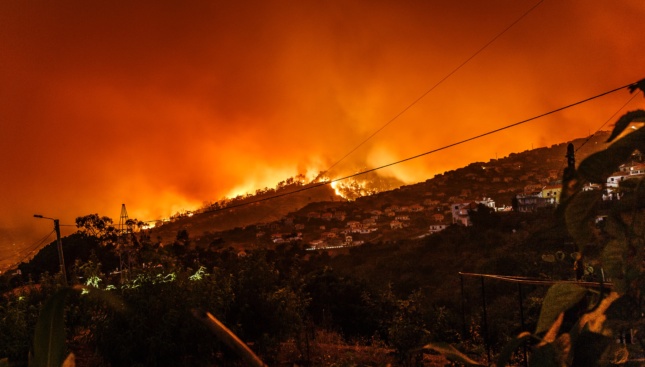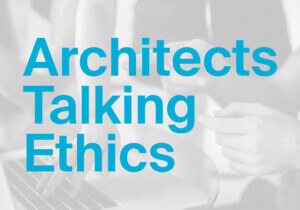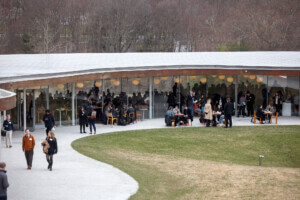We do not need more vivid reminders that extreme weather events have the potential to cause appalling loss of life and tremendous property damage. The deadly fires that burned through California in November 2018 followed hard on the heels of a series of hurricanes and floods that wreaked terrible human and economic damage from New York to Houston and Puerto Rico. We are becoming increasingly confident that these extreme events are caused by climate change or, at any rate, that climate change makes them significantly more likely.
Recently, the Fourth National Climate Assessment warned that climate change will cost the United States economy hundreds of billions of dollars annually by the end of the century. Increasingly, stakeholders in the construction process are recognizing that buildings need to be designed to withstand the climate conditions of tomorrow as well as today. Naturally, this leads to the question of whether there will be a legal liability when design professionals fail to anticipate the conditions brought about by climate change.
There are several avenues by which a design professional might be held liable for failure to adapt to climate change. This article focuses on torts and tort-like duties, which represent a significant risk for design professionals. There are other sources of liability, though. Contracts, statutes, and regulations may all impose particular requirements on architects and engineers. Representations that a project complies with certain standards might also generate litigation. For example, in the wake of the recent California wildfires, the state’s largest utility company was sued by shareholders alleging that it was liable to its shareholders for failing to prevent the fires.

Tort law is the body of law that governs our duties to others and the damages that may be due if those duties are violated. It is tort law that generally governs lawsuits over medical malpractice, for example, the injured party claims that they should be compensated because the medical professional’s actions fell below an acceptable standard of care and caused their injury. Under tort law, the design professional owes a duty toward those who could foreseeably be impacted by his or her actions—potentially extending beyond those to whom design professional have contractual duties (such as project owners) to include others, such as users or neighbors. Generally, the duty extends only to those who suffer physical injury to person or property—a tenant whose possessions are damaged by floodwater might have a claim against the design professional; the store across the road that loses business due to a building closure very likely does not.
Tort suits alleging liability for failure to adapt to climate change are unusual, but there are signs that they may be becoming more commonplace.
Tort suits alleging liability for failure to adapt to climate change are unusual, but there are signs that they may be becoming more commonplace. An Illinois insurer recently filed (and then dropped) lawsuits alleging that various state municipalities were responsible for payouts because their stormwater management plans did not anticipate increased rainfall that caused flooding. In the wake of Hurricane Katrina, plaintiffs argued, with some success, that it was foreseeable to the US Army Corps of Engineers that a navigation channel would change the local microclimate in ways that exacerbated hurricane damage (St. Bernard Par. Gov’t v. United States, 121 Fed. Cl. 687, 721 (2015), rev’d on other grounds, 887 F.3d 1354 (Fed. Cir. 2018), petition for cert. filed, No. 18-359 (Sept. 9, 2018).
Tort-like duties may arise in other contexts. Contracts might impose tort-like duties upon design professionals. For example, an architect whose contract specifies a useful life for a building might have a duty to anticipate the effects of climate change during that timeframe. Similarly, statutes can impose tort-like duties and may even be enforceable by private plaintiffs—a not-for-profit was recently found to have the standing to sue an oil company over allegations that its vulnerability to flooding made it incompatible with “good engineering practices” under the Clean Water Act.
So, what is the standard of care? Simply put, design professionals have a duty to exercise the care of a reasonable practitioner in the location. Unfortunately, complying with this simple standard can be tricky, and the door is often open for someone to argue after a problem develops that the architect or engineer did not exercise the required level of care. The best way to minimize the chances of that door being opened is to pay careful attention to local best practices.
Compliance with local codes does not insulate the design professionals from liability if their peers are building to a higher standard.
Building codes are one potential pitfall. While failure to comply with local building codes can lead to a finding of a per se (i.e., automatic) violation of the design professional’s duty, compliance with local codes does not insulate the design professionals from liability if their peers are building to a higher standard. Design professionals would be well-advised to be aware when local codes are outdated or backward-looking. For example, most states’ building codes do not account for sea-level rise.
Similarly, relying on locally available climate data or projections may not be enough to protect the design professional from liability. Today, an architect in New York would have access to well-founded floodplain maps that take into account the potential impacts of climate change. However, this was not always the case. When Hurricane Sandy struck in 2012, many communities’ FEMA maps dated back to 1983. In this situation, it would be more difficult for a design professional to claim that reliance on official floodplain data was reasonable. And this is a significant problem—a 2017 government audit found that 58 percent of FEMA floodplain maps nationally were out-of-date. Further, although New York City benefits from an additional set of FEMA-drawn maps that anticipate the impact of rising sea levels, this is not the case nationally, meaning that even a brand-new floodplain map represents the chance of being hit with a flood in the last century rather than the next one.

Practitioners should also be aware of codes governing public development. Future plaintiffs could argue that they are admissible to attack or to buttress expert opinions on the prevailing standard of care for private development. Our practitioner in New York should be aware of the city’s new Climate Resiliency Design Guidelines, which identify climate change risks and appropriate resiliency interventions for city projects—such as raising machinery when building in a potential floodplain. New York is not alone—various other state and local bodies, such as Boston, have developed or are developing similar standards. The Illinois lawsuits discussed above relied, in part, on rainfall predictions in the Chicago Climate Action Plan.
Similarly, plaintiffs may argue that various nonbinding standards show prevailing practice. Industry bodies such as the American Society of Civil Engineers are attempting to develop such standards, and the Canadian Engineering Qualifications Board has published standards for engineers adapting to climate change. There is also the risk—as some design professionals have experienced with LEED certification—that undertaking to comply with otherwise nonbinding standards could create legal obligations.
Our climate is changing rapidly. Design professionals already have plenty of incentives to make sure that our buildings and infrastructure are ready. A further incentive is that it reduces the risk of tort liability.
Larry Dany is a partner at Eversheds Sutherland (US) LLP where he leads the Construction Industry Practice Group in New York City. He helps clients across the construction industry resolve a wide variety of complex business and legal challenges through planning, contract negotiation and drafting, dispute avoidance, claim management, arbitration, and litigation from inception through jury trial in state and federal courts across the country.
Nicholas Boyd is an associate at Eversheds Sutherland (US) LLP. He advises corporations, financial services companies, and state agencies on complex business and civil litigation matters. His practice has a particular emphasis on antitrust disputes, class actions and construction lawsuits.











